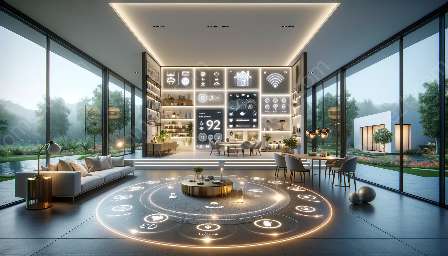In today’s fast-paced world, the integration of technology into the home environment is becoming more prevalent, leading to increased interest in automating daily housework. One area where this trend is particularly noticeable is the development and use of domestic robots, which have the potential to redefine how we approach interior design and the concept of a smart home.
Technological Advances in Interior Design
Technological advances in interior design have been driven by the need for more efficient, convenient, and sustainable living spaces. With the advent of smart home technology, interior designers are now incorporating automated systems into their designs to enhance the overall functionality and comfort of a home.
From automated lighting and climate control to integrated audio-visual systems, the integration of technology into interior design has opened up new possibilities for creating personalized and interactive living environments. In recent years, the focus has shifted towards the development of domestic robots that can assist with various household chores, effectively revolutionizing how we perceive and utilize space within our homes.
Intelligent Home Design
Intelligent home design aims to create living spaces that are not only aesthetically pleasing but also adaptive and responsive to the needs of the occupants. This approach encompasses the incorporation of artificial intelligence, sensor networks, and automated systems to optimize the functionality and efficiency of a home.
With the introduction of domestic robots, intelligent home design has evolved to accommodate these advanced technologies, seamlessly integrating them into the fabric of the home. The ability of domestic robots to autonomously perform tasks such as vacuuming, mopping, and even gardening has led to a reevaluation of traditional spatial layouts and furniture configurations, as homeowners now have the freedom to prioritize comfort and aesthetics without compromising on practicality.
The Influence of Domestic Robots on Interior Design
The influence of domestic robots on interior design is multifaceted, impacting various aspects of home living. From a functional standpoint, the use of domestic robots streamlines and enhances daily housework, allowing for more efficient time management and a reduction in physical strain on occupants.
Furthermore, the presence of domestic robots has prompted interior designers to reconsider the organization and layout of living spaces, as these robots require clear pathways and designated areas to operate effectively. This has led to a shift towards more open and adaptable floor plans, as well as the integration of discreet charging stations and storage solutions to accommodate the presence of these technological helpers.
From an aesthetic perspective, the introduction of domestic robots has spurred a new level of creativity and innovation in interior design. Designers now have the opportunity to incorporate these robots seamlessly into the overall visual and tactile experience of a home, blurring the lines between technology and interior décor. Additionally, the sleek and modern designs of many domestic robots have inspired a new wave of minimalistic and futuristic interior design concepts, further shaping the overall ambiance of contemporary living spaces.
Conclusion
As domestic robots continue to gain traction in the realm of daily housework, their influence on interior design will undoubtedly continue to evolve. By embracing technological advances in interior design and intelligent home concepts, designers and homeowners alike can capitalize on the potential of domestic robots to transform living spaces into efficient, stylish, and user-centric environments.


